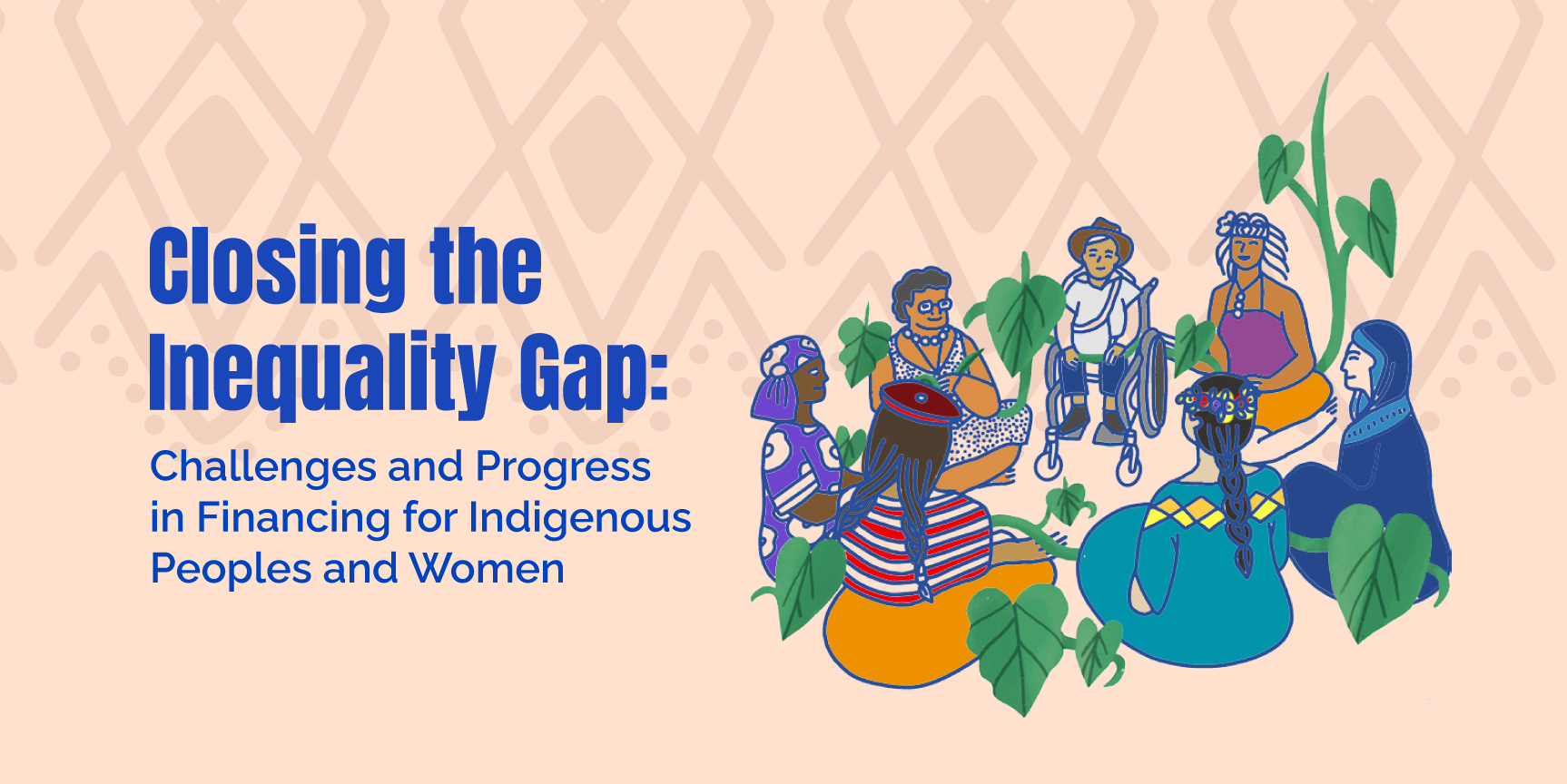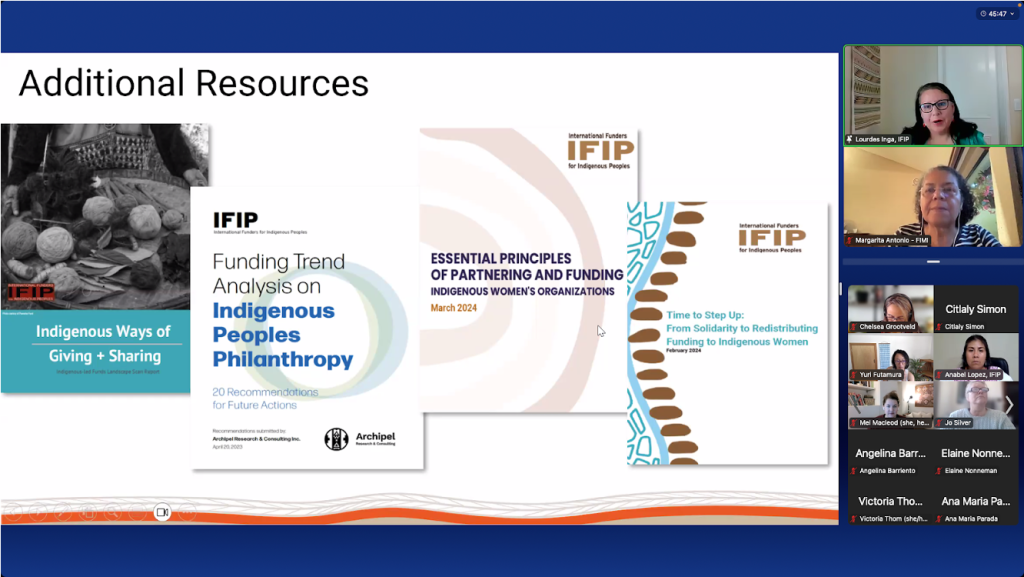
Introduction
The International Funders for Indigenous Peoples (IFIP) and the International Indigenous Women’s Forum (FIMI), presented two crucial reports: "Global Funding Trend Analysis on Indigenous Peoples Philanthropy" and "Leaders and Stewards: Global Analysis of Funding to Indigenous Women". These reports provide an in-depth view of global funding trends directed at Indigenous Peoples and highlight the urgent need to increase resources for Indigenous Women.

Importance of Funding for Indigenous Peoples
Chelsea Grootveld from JR McKenzie Trust Board, and IFIP Board emphasized the importance of understanding global funding trends for Indigenous Peoples, noting: “Less than 0.6% of global philanthropic funding benefited Indigenous Peoples between 2016 and 2020. This figure is a clear indication of the systemic exclusion faced by Indigenous Peoples in the philanthropic sector.”
Lourdes Inga, IFIP Executive Director, highlighted that only 33% of that 0.6% of funding went directly to Indigenous Peoples' organizations, without intermediaries. She commented: “This data underscores the need to improve visibility and transparency in resource allocation, ensuring that these funds reach Indigenous communities directly.”

Disaggregated Data and Authentic Representation
A recurring theme in the meeting was the difficulty in accurately classifying funding data. Margarita Antonio, FIMI Ayni Fund Coordinator, emphasized the importance of having disaggregated data that accurately reflects the realities of Indigenous Peoples. She highlighted: “The lack of precise data has led to the underrepresentation of Indigenous Peoples' issues and, consequently, to a lack of adequate resources.” Lourdes Inga also mentioned cases of misclassified grants that did not directly benefit Indigenous Peoples, stressing the need for stricter quality controls and greater clarity in the terminology used.

Co-Investment and Empowerment
Teresa Zapeta, Executive Director of FIMI, emphasized the importance of facilitating resources for Indigenous Women as an essential priority to reduce the inequality gap. Teresa explained: “It is crucial to complement with financial resources from those who hold economic power. These financial resources, combined with our own resources, we call co-investment, which also brings a focus on empowerment. We must also trust the capacities of Indigenous women to be empowered, to create strong institutions that can access these resources. With this study, we once again make that call to action to transform the decisions that keep us in inequalities.”

Progress
Despite the challenges, some progress was acknowledged, such as the increase in funding for Indigenous Women from 0.7% to 1.4%. Margarita Antonio emphasized the importance of these advances but also insisted that much remains to be done: “These small increments are important, but we need a stronger and sustained commitment to see real change in our communities.”
Challenges and Gaps in Funding
The reports revealed significant challenges in funding, including:
- A significant portion of Indigenous Women’s Organizations operate with limited financial and human resources.
- Inadequate grant sizes and shorter funding durations hinder the sustainability, capacity building, and ability of organizations to engage in long-term planning.
- The diversity of the languages spoken by survey respondents highlights not only the global nature of those surveyed, but also the necessity of multilingual support in funding processes.
- Thematically, most respondents identified working in the Indigenous Peoples' rights, environmental and climate realm, and/or women’s rights and gender equality.

Conclusion
The meeting made it clear that, while some progress has been made, funding for Indigenous Peoples, and particularly for Indigenous Women, remains insufficient. The reports presented are a call to action for the philanthropic community, urging them to recognize and more effectively support Indigenous organizations.
For more details and access to the full reports, visit IFIP and FIMI.





